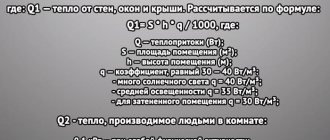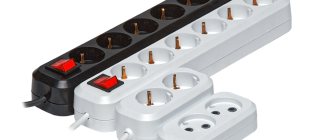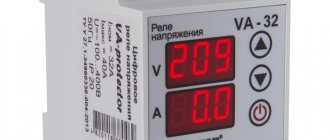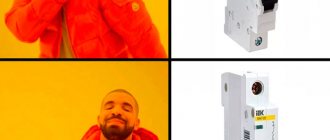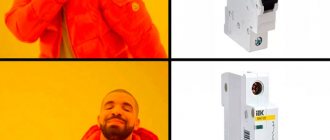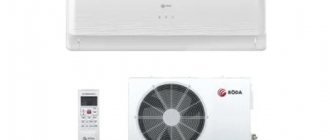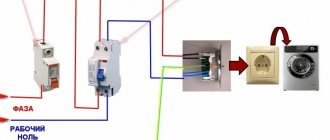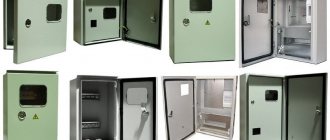To choose a split system for a home, for an apartment with optimal parameters, you need to compare the area and parameters of the room with the power of the device, analyze the required functionality and modes, temperature range, and the ability to adjust air flows. Additional options are appreciated: humidification, auto control. It is important to correctly determine the size of the device: regular or inverter; on the wall, floor; channel, window.
What is a split system
The split system is a type of climate control equipment, air conditioning systems (ACC), and air conditioners. In this case, the products are not monoblock, but with two blocks spaced apart from each other: external and internal. There are window modifications that have a monoblock body, but the blocks in such a box are still divided (one side is exposed outside, the other is inside the room). If on the facade of a building hangs a familiar box with a fan, and sometimes with a tube from which condensation drips, then this is a split.
Two separate units in the air conditioner make expanded functionality possible: the equipment works not only for cold, but also for heating. The system is considered more economical than monoblock air conditioners. Disadvantage of the device: one of the blocks must be mounted on the outside (from the street) of the walls, which often requires the services of construction climbers.
Device, principle of operation
What do split systems consist of:
- outer part with compressor, impeller and condenser (radiator);
- internal (evaporative) part, inside the building with a fan, thermostatic valve, air ducts with horizontal and vertical louvres that regulate the flow of treated air. The radiator of this part is called the evaporator;
- thin pipeline with freon, condensate tray;
- filters (fine, coarse);
- nodes for advanced options: humidification, odor removal, etc.;
- control units, electronics, power supply.
The operating principle of split SCVs is similar to air heat pumps; it is based on the property of substances to absorb heat during evaporation and release it when entering a liquid state. In this case, cooling occurs due to the transformation of freon. The equipment consists of units that condense (compress) and dilute the refrigerant.
Stages of operation of a split system:
- The compressor creates low pressure, compresses the freon, while its temperature rises to +75... +85 °C, after which the refrigerant becomes gaseous and enters the condenser.
- Next, the substance is sent to the evaporator, where it cools down, since the unit is cooled by the air flow, and again turns into liquid. In the internal segment, a thermostatic valve, using capillaries, adjusts the degree of pressure and pressure, lowering/increasing the temperature to the values set by the users.
- The liquid refrigerant in the evaporator, in the process of cooling the room environment, absorbs heat from there, turning again into a watery state, and returns to the compressor. If the system operates for heating, then the described cycle occurs in reverse.
Types of refrigerants used
Different types of refrigerants are used as coolers in split systems. Let's briefly look at the features of the main options.
R410A
An azeotropic refrigerant containing elements with identical evaporation parameters. In the event of a leak, the refrigerant characteristics remain unchanged.
Features of R410A include higher pressure, which provides for more stringent requirements for reliability parameters and circuit strength.
As a result, the price of the device also increases. One of the reasons is the high price of the refrigerant itself.
R32
An advanced version of the refrigerant, which has three main advantages - isotropy, safety and efficiency.
Air conditioning systems with this refrigerant are more compact. In addition, the composition itself is not harmful to the environment, and if necessary, you can easily refill the air conditioner.
The downside is the high price due to the cost of the R32 and high design requirements.
R407C
It is an alternative to R22 (described below), does not harm the ozone layer, but has a higher price and operating pressure.
The composition includes polyester oil, which during operation takes on moisture, and this, in turn, leads to deterioration in performance.
In addition, the filler is heterogeneous in composition, and its elements have different parameters in terms of volatility and boiling point.
As a result, even with a minimal leak, the properties of the refrigerant deteriorate, and the air conditioner has to be recharged.
R22
The oldest type of refrigerant, has a low price and requires low pressure. As a result, the system is more reliable and the price is lower.
Due to its homogeneity, in the event of a leak, the system can be quickly replenished with the same type of working composition.
But the refrigerant itself is dangerous for the ozone layer, which is why it is almost never used in production today.
What is the difference between a split system and a monoblock air conditioner?
A split system, unlike single-block air conditioners, can operate for both heating and cooling. Such expanded functionality is achieved precisely because of the presence of two separate blocks, which also makes the system much more efficient.
The use of monoblock units is limited to relatively small areas. Splits are more efficient and can serve literally any size premises, from kitchens, small rooms to industrial and large office facilities.
Inverter or conventional split system
There are two main types of split systems based on the operating technologies used - conventional (ON/OFF, “stop-start”) and inverter, with a unit that creates alternating current and uses it. Questions - which is better, inverter or conventional, which split system to choose for an apartment according to the type of technology - are considered at the beginning of the process of selecting a device, since this point affects all characteristics, price, and quality of work.
Advantages of inverter split systems
Inverter models are more modern. Advantages and differences from conventional ones:
- these are the quietest best split systems;
- If you need full heating in winter, then an inverter unit is definitely needed. Conventional models cool normally when outside is about +16 °C and above, and heat when not below −5 °C. Inverter split air conditioners are capable of heating an apartment at an outside temperature of −15 and even −25;
- conventional systems operate in on/off cycles. upon reaching the set temperature, which is why they are also called ON/OFF. In fact, they operate only in 2 modes: maximum and minimum. Inverter air conditioners operate constantly, maintaining an optimal climate without sudden jumps, smoothly changing their power.
Myths and relativity of advantages of inverter split systems:
- the difference in electricity savings is noticeable only if the split SCV operates 24 hours, which, for example, is relevant for southern countries. If you turn off the device when leaving the place of employment in the morning, and turn it on for a short period after arrival, then both systems will use maximum modes, and this characteristic will not differ much. For use in the average statistical conditions of our country, the economy of the two systems does not determine the choice;
- If we consider what are the reliable best split systems, then due to the smooth operation, the service life of inverter models is longer. But this plus is also relative and noticeable if the device is used 24 hours or most of the day. In the mode described above, the operating period is almost the same.
Flaws
Choosing inverter air conditioners has its disadvantages:
- The devices are complex and costly to repair: if the external unit breaks down, the services of two craftsmen will be required - a refrigeration technician and an electronics engineer. Spare parts are more expensive and harder to find;
- inverter splits are sensitive to the quality of electricity supply. The disadvantage is mitigated by reliable automatic protective shutdown (RCD, RCBO) and grounding, which is always mandatory, regardless of the type of equipment. But theoretically, the risk of failure is greater.
Bottom line: inverter or conventional split air conditioner
Experts and craftsmen consider budget inverter systems to be evil - they often break down and are difficult to repair. Instead, it is better to buy a high-quality ON/OFF split model at the same price, for example, from expensive brands Daikin, Mitsubishi, General. Such an air conditioner will be more practical, easier and cheaper to maintain.
The inverter split is chosen by most users if full heating in winter and quiet operation are especially required - this is the only real advantage of such devices. It is recommended to buy products from the highest price echelon - they are less likely to fail and have a long warranty. The depth of adjustment for a high-quality device should not be lower than 25–80%, for example, the normal figure is 5–90%, which indicates a prompt response to temperature changes and efficiency.
The best manufacturers of climate control equipment
The ease of use of the air conditioner, its functionality and, most importantly, reliability depend on the choice of supplier. To make it easier to decide, let's make a list of the best manufacturers.
Place #1 - sophisticated Daikin air conditioners
The company has been successfully operating in the market for more than four decades. During this time, Daikin has established itself as a supplier of multifunctional and high-quality household appliances. Its employees pay special attention to manufacturing technology, as well as after-sales service of the device.
Daikin factories are located in Japan, Belgium and Thailand. This production base allows us to produce more than 2.5 million air conditioners every year
The manufacturer presented above has recently been a market leader, offering customers a good range of Daikin split systems. All brand products are of decent quality.
Therefore, when placing an order, you can count on the environmental friendliness of the device, its high quality and durability. But keep in mind that such a set of benefits will be expensive.
Place #2 - Mitsubishi semi-industrial equipment
Mitsubishi is in second place among companies producing household and semi-industrial climate control equipment. Most of the devices of this brand belong to the elite class, but the range also includes relatively inexpensive models. We recommend that you familiarize yourself with the rating of the best air conditioners of the brand.
If you decide to go with this brand, then pay attention to inverter units. As a rule, they are equipped with several automatic operating modes, as well as an ionizing air purification function.
Place #3 - perfect mid-range Toshiba
For those who want to save money, Toshiba produces mid-range air conditioners. The company has been operating on the market for more than 120 years, and it was its engineers who created the first split system for a New York printing house.
The distinctive features of devices from this brand are reasonable prices, high reliability, and a huge range of functions. At the same time, most models are equipped with an inverter compressor, which allows you to save on electricity.
Place #4 - innovative Fujitsu split systems
The fourth place in the ranking was taken by the Japanese company Fujitsu. Its range is full of semi-industrial and household air conditioners.
It is this company that is the first to introduce innovative developments, setting the trend in the climate control equipment market.
Fujitsu technique is classified as expensive. This is explained by the fact that air conditioners are equipped with a huge number of different sensors. This engineering solution helps protect the device from freezing, power surges and excessive current.
Place #5 - reliable Panasonic equipment
The last place in the TOP is occupied by another Japanese brand. Panasonic produces industrial split systems, as well as household models. With each new device, you can see how the company improves the quality of materials, increases manufacturability and increases the number of functions.
Panasonic models of all price categories are available on the market. But if you can afford to spend a little more, then pay attention to split systems equipped with generators and air ionizers, as well as a catechin filtration system.
Power and performance
If the power is insufficient, the unit will not be able to maintain the set temperature. There is also no point in overpaying for a split system with excessive performance if its full potential is not used; the equipment is quite voracious - from 2 kW and above.
Based on power, you can divide it into the following groups:
- weak - up to 2.5 kW. For small rooms up to 20 m²: children's rooms, bedrooms, kitchens;
- medium - up to 3.5 kW. For a regular living room 20–30 m²;
- high-performance - up to 4.5 kW, from 31 m²;
- the most powerful - from 4.5 kW and above. For large office areas, industrial and administrative facilities. Usually these are channel, cassette models.
Calculation
Calculation rules (ceiling heights up to 3 m):
- 1 kW per 10 m² plus a reserve of 25%, since more power will be required when in the summer the sun shines into the room most of the day;
- It is advisable to increase the reserve by 30%, or calculate based on 1.5 kW per 10 m², if the room is on the sunny side or has a lot of heating devices: in the kitchen, in an office with computers;
- number of people: 1 person in an office or apartment will require 100 W, but for restaurants and gyms this value should be increased to 300 W.
Systems are often called “sevens”, “nines”, these are parameters according to American standards - 9,000 BTU and so on. To convert to Watts, this value must be divided by 3.412. For rooms measuring about 20 m², “sevens” (7,000 BTU) are suitable, “nines” - for 27 m² - (9,000 BTU).
Usually average calculations are enough, but there are also formulas for more accurate calculations:
Toshiba RAS-07BKVG-E / RAS-07BAVG-E
Despite the fact that the device has been offered for sale for several years, its technical characteristics are not much inferior to new models of split systems.
To cool the room, ozone-friendly freon is used, which is not poured into every model, even of a premium brand.
The device has good energy efficiency and has one of the most attractive designs.
The main characteristics of the Toshiba RAS-07BKVG-E / RAS-07BAVG-E include:
- five room cooling speeds;
- improved air purification filter;
- long service life;
- affordable price.
Expert opinion
Starostin Konstantin Adreevich
Air conditioner installation and maintenance specialist
The manufacturer claims good efficiency of the Toshiba RAS-07BKVG-E / RAS-07BAVG-E in rooms up to 20 square meters. m, but it is better to use them in rooms up to 15 sq.m.
Functional
All split systems have cooling and heating modes. The following features are also standard for quality devices:
- ventilation. Only the indoor unit works. The mode is useful not only in summer, but also in winter - it will allow you to evenly distribute warm air from the radiators throughout the apartment;
- drainage. Reducing humidity will lower the temperature by 2-3 degrees;
- night mode (“sleep”). The fan speed and, accordingly, noise are reduced. In this case, the temperature changes as smoothly as possible over the course of hours;
- auto control, autonomous operation, timer, programmability. Sensors record indicators (humidity, t°) and transmit them to the receiving unit, which reacts according to the parameters set by the user. The function allows you to set the on/off time, operating duration;
- turbo mode;
- two filters;
- 2 or more air flow directions;
- remote control (plus manual).
Feasibility of advanced and additional features
Advanced functions often serve more of an advertising role than a practical one, but at the same time they always significantly increase the price, so you need to decide whether the user needs them.
Let's evaluate which advanced options provide practical benefits and tangible comfort:
- Only filters from dirt and dust bring real benefit: if the heat exchanger becomes clogged, the level of heat removal will decrease and the compressor will burn out. All others - vitamin, catechin, Nano Silver, electrostatic, carbon, photocatalyst, etc. - are largely marketing ploys;
- ionization. Only large-sized ionizers provide a real effect, but they are extremely rarely installed on air conditioners. It is better to purchase such a product separately;
- Options for smooth temperature changes and draft protection are practical. Most people are familiar with the cooling effect of an air conditioner - it feels very sharp and can lead to a cold;
- odor removal, deodorization. Despite its apparent minor importance, this function will bring tangible comfort;
- hydration. Split systems dry out the air, so the option is required, but, unfortunately, such a function is rarely present in air conditioners;
- Practical benefits and comfort are also provided by: anti-icing, delayed start of the compressor to protect it, LED display on the case and on the remote control, control via the Internet and smartphone;
- motion sensors, “smart eyes” that redirect the flow towards a person or turn off the device in the absence of people are useful options.
Apply filters
Modern split air conditioning systems can use different filter elements.
The main ones are dust ones, which are installed in almost all modern air conditioners.
But more advanced models also have more powerful filters.
Antifungal
A special filter that removes dangerous fungi, such as mold, from the air. This option is provided in many individual devices, but in an air conditioner it is more efficient.
As a rule, antifungal filters are not always needed and antibacterial elements can often be used.
Plasma (electrostatic)
The action of the filter element is aimed at saturating oxygen with ions with a “minus” charge. As a result, the split air conditioning system plays the function of an ionizer.
Additionally, such filters are able to kill microorganisms, destroy harmful substances and trap dust and smoke.
In addition, such elements, under the influence of air saturated with ions, themselves receive a charge and are attracted to the filter plates.
Deodorant
A filter element whose function is to combat odors at the molecular level, as well as remove large particles from the air.
A classic representative of such products is a filter based on activated carbon.
Other sorbents can also be used, which require periodic replacement during operation. If you do not change the filter in time, it itself becomes a source of pollution.
Antibacterial
Designed to clean the air from fungi, bacteria and other harmful substances.
The principle of operation may differ: UV radiation, the use of dietary supplements, etc.
But it’s worth considering that not all such filters are effective against viruses. This point must be clarified separately when purchasing.
Catechin
One of the subtypes of antibacterial filter. The peculiarity is the use of catechin - a natural substance that disinfects the air, has a low price and is highly effective.
Such devices can also help protect against viruses, which is why they are classified as a separate group.
Expensive or cheap, energy consumption
Recognized brands have the following advantages:
- declared and actual characteristics always match;
- the design and installation details are thought out to the smallest detail;
- in a high-quality quiet split, the noise level of the room part does not exceed 20–25 dB, which is comparable to the quiet rustling of leaves outside the window. For inexpensive products, the indoor unit emits 28 dB, and the outdoor unit produces 40–50 dB. More powerful high-quality systems - 25s, 35s (25,000, 32,000 BTU) - have the same 28 and 40 dB, but for them this figure is normal due to high performance, but the noise of cheap devices in this power segment is accordingly, higher;
- high energy efficiency: A+++, A++, A+.
If you determine which split system from which company is better, the choice can be made in the low-price niche - there are quite decent products there, but the risk of getting defective is higher.
Market conditions make it possible to reduce the cost of production without reducing the quality of technology. Both little-known brands and popular brands use components from the same manufacturer in many models. A cheap air conditioner may work normally and rarely break down, but operating comfort, etc. will be less. The low price range is suitable if the user is not demanding on noise, but with advanced options if the yellowed plastic does not interfere and suits high power consumption.
Features of pricing policy
Cheap devices can do their job well, but buying products costs up to 15 thousand rubles. risky: this price is achieved by the lack of rejection and quality control. Reliable split systems should be chosen starting from the average price range of 20 thousand rubles.
One of the marketing ploys is the presence of copper tubes in the kit, but often the manufacturer is silent that their wall thickness is 0.6 mm, and for acceptable quality 0.8 mm is required. It is better to choose a good kit without these parts and buy them separately.
Dimensions
A reliable air conditioner should not be small, but moderately large, comparable to the area of the room and its power. Example: the internal part of a product with a parameter of 9,000 BTU (for 25 m²) should be from 790–800 mm in length and 270 mm in width.
The correct sizes are necessary for the following reasons:
- power and quality require larger parts and greater wall thickness, especially for heat exchangers;
- air outlet openings, louvres must be adequately large to effectively distribute flows in different directions and reduce noise.
A device that is too small will not be able to properly service and distribute coolness/heating; it is noisier. Usually, of two air conditioners of equal power, the larger unit is better, quieter and more efficient.
Assembly, materials
Based on the quality of assembly and plastic, if the user chooses a product via the Internet, then he should read user reviews.
If the split is selected directly in the store, then it becomes possible to inspect:
- ask the seller to open the lid - it should not be noticeably thin or flimsy;
- high-quality plastic with thick walls, bright white, without yellowness;
- ask to remove the mesh filter and inspect the heat exchanger - the petals should be free of jams and not too thin. Low-quality models have plates so thin that they crumple at the slightest touch.
Standard sizes
- Wall-mounted. Traditional size. One block is in the room (usually under the ceiling near the window), the other is a little lower on the outside of the building wall. This is a universal design, the product can be installed in apartments, houses, offices, and small shops. The only negative is that the power is usually up to 10 kW, which is enough for an area of up to 100 m².
- Duct. For installation under suspended ceilings. System with air channels around the perimeter of the premises. For large rooms, offices or for an entire apartment, country house. The power of the equipment is high - 5–25 kW.
- Cassette. The indoor unit is in the form of a square cassette with air outlets on the sides. Convenient to install behind a suspended ceiling. The side channels are bent at 30–35 degrees, with blinds, so the prepared air does not exit vertically downwards, but to the sides.
- Column, floor-ceiling. They differ in overall dimensions, are focused on high productivity, and can replace duct and cassette systems in the absence of suspended ceilings.
- Window monoblocks. Two blocks in one housing. A window or wall divides such a box into two parts - one is exposed outside (to the street), the second remains indoors. A practical solution, but there is a drawback: this type of installation reduces the thermal insulation of the room.
- Mobile, with remote blocks. The standard size allows you to move the equipment: all you need to do is move one of the blocks or the air duct outside. Pros: portable, no need for labor-intensive installation. Disadvantages: low power, noise, high price.
It is possible to combine different units, for example, one, paired or several external boxes serve internal air conditioners, including those of different sizes.
How to choose the right place to place the outdoor unit
Few places have a technical balcony. The most convenient place to place the external module is next to the fire escape. Next comes a place next to the balcony, then under the window.
In these places they can be maintained without the involvement of industrial climbers, which significantly reduces operating costs.
An example of a high-quality split system
When choosing the best split systems, you should take into account a unique minimum of functions and parameters, which, as a rule, are present in high-quality and first-in-reliability devices:
- modes other than cooling/heating: ventilation, quiet (“night”, “sleep”). If there is humidification, then this is an ideal option, but even in the premium segment it is rarely found in splits;
- auto control, programmability;
- manual and remote control (with remote control). Ideally, the system supports control from a smartphone;
- plastic, heat exchanger blades are thick;
- noise level up to 25 dB;
- protection system: monitoring the condition of filters, freon leakage, self-diagnosis with clearly deciphered codes, current sensor, auto defrost. There must be protection from low temperatures - it is extremely undesirable to start an unadapted air conditioner at sub-zero ambient temperatures; some models switch themselves off below a certain point, for example -5... -10 °C;
- the temperature range should not be too limited.
Choosing and determining from reviews which split system is better usually always helps to find the best option, so it is advisable to read user opinions on various sites.
Editor's Choice
Leberg LS/LU-07OL
Leberg LS/LU-07OL.
Photo: yandex.market.ru Wall-mounted split system at an affordable price. It has an attractive design and operates quite quietly; in the summer the model effectively refreshes the room and in the winter it warms it up.
This split system for an apartment can please you with a smooth and at the same time non-braking change of modes and speeds. The drying mode works adequately and brings tangible benefits, for example, after rain. A distinctive feature of this device is the presence of air filtration, with this function it becomes easier to breathe. In addition, there is a deodorizing filter, a filter that allows vitamin C to pass into the air, and an anti-ice function that will rid your windows of unwanted ice.
Main characteristics
| Air conditioner power | 7 BTU |
| Heating power | 2300 W |
| Cooling power | 2200 W |
| Additional functions | self-diagnosis, automatic temperature maintenance, warm start, auto-restart, anti-ice system |
Advantages and disadvantages
Availability of high-quality air filtration with a deodorizing filter and a filter with vitamin C, works quietly - noise level - up to 37 dB
This company has few service centers in Russia
show more
Rating of split systems
The following rating of the best split systems should be regarded primarily as positions of brands and variants of product characteristics. Over time, models may become outdated, but the user will have a basis for guiding the quality of the product, which will allow him to make the right choice.
- Daikin FTXG20L. Premium segment, inverter, quiet operation (19 dB), motion sensors, multi-stage filtration, class A energy saving, anti-icing protection. There are not many advanced options, but this is compensated by extreme reliability.
- Mitsubishi Heavy Industries SRK-25ZM-S: inverter, auto mode selection, timer, auto restart, self-cleaning, self-diagnosis, 21 dB, air flow control (8 options), programmability. An impressive range of advanced options.
- Electrolux EACS-09HAR/N3. Two filters (air, antibacterial). There are adequately working self-diagnosis, self-cleaning, and programmability.
- Toshiba RAS-07EKV-EE/RAS-07EAV-EE. Inverter quiet split system. There is programmability, operation boost mode, economy mode (ECO), compressor start protection with a 3-minute delay.
- Hyundai HSH-S121NBE. Inverter system, low noise. Self-cleaning, double level of filtration, ability to set on/off time. High-quality plastic, assembly. The downside is that there is no vertical adjustment of the air flow from the remote control vertically (there is horizontal adjustment).
- Ballu BSW-07HN1/OL/15Y. One of the cheapest air conditioners, but it copes well with its tasks within its capabilities. Quite high-quality assembly, glossy thick plastic, the product is considered reliable and rarely breaks. Energy consumption class A, which is an excellent indicator for this level. Pros: low noise (24 dB), 4 speeds, modern environmental refrigerant R410A. Cons: sometimes modes change spontaneously. If you need a cheap working split system, then the device can be recommended with confidence.
- LG S09 SWC. Inverter air conditioner, noise level 19 dB. There is an ionization function, a deodorizing antibacterial filter, and auto-cleaning. The downside is that you often come across poor build quality.
- Samsung AR 09HQFNAWKNER. Cheap but high quality air conditioner. It is worth highlighting simple replacement and cleaning of filters. Cons: low cooling speed, noise.
- Kentatsu KSGMA26HFAN1/K. Two filters, high-quality assembly and materials, programmability, self-diagnosis, auto-protection, draft prevention function. Minus: noise level 31 dB.
- Haier HSU-07HMD 303/R2 is an excellent combination of price and quality. Disadvantage - the noise level of the indoor unit is 30 dB, energy efficiency D. There are 3 options for adjusting the air flow, 2 filters, odor elimination, programmability.
Comparison by noise level
The noise level (sound pressure) is individual, and all people perceive it differently. In the specifications, it is indicated in noise units taking into account human perception of sound dB(A) - acoustic decibels. The parameter is indicated for several types of load (modes): high, medium, low and ultra-low.
For an inexpensive inverter air conditioner Haier Tundra DC, the noise level is 36/34/30/24 dB(A). At maximum load, its volume will be like a muffled conversation between people; at minimum, it will be like a whisper. The more expensive Haier Flexis Super Match model has even lower performance - 38/32/25/16 dB(A).
Table of correspondence to familiar sounds
| dB(A) | Characteristic | What sound does it remind you of? |
| 0 | Can not hear anything | Silence |
| 20 | Barely audible | Whisper of a person at a distance of 1 m |
| 30 | Quiet | The ticking of a wall clock (permissible maximum noise at night according to SNiP 23-03-2003 “Noise Protection”) |
| 35 | Quite audible | Muffled conversation |
| 40 | Can be heard well | Normal speech of people (the norm for residential premises during the day) |
| 75 | Noisy | Screaming, laughing at a distance of 1 m |
| 95 | Very noisy | The noise of a moving subway car 7 m away |
